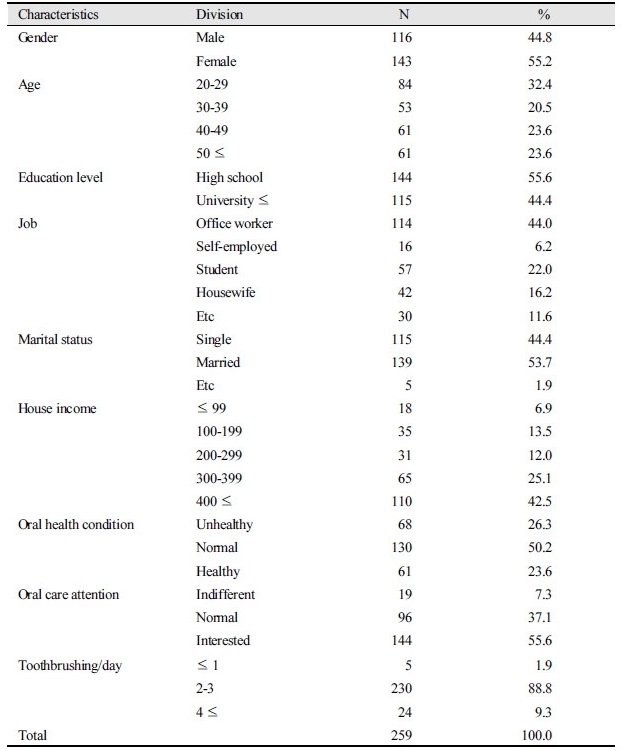Abstract
Objectives: The purpose of this study is to investigate the effect of preventive treatment experience on scaling fear level. Methods: A total of 259 adults who had visited the dental clinic were analyzed. The results were summarized as follows. Statistical analysis of the collected data was performed using the SPSS WIN 20.0 statistical program. The general characteristics, scaling experience, and the characteristics of the subjects were analyzed. Frequency of scaling according to general characteristics was analyzed by independent sample t-test, Scaling fears according to treatment experience were tested by t-test. Correlation analysis was performed for scaling fears according to the reliability of dental hygienist. Regression analysis was carried out to investigate factors affecting scaling fear. Results: Level of fear during scaling was higher in females (3.03) than in males (2.54) and that after scaling was scored higher in females (2.68) than in males (2.34) by general characteristics (p<0.001). The adults who were not healthy in oral health showed the highest levels of fear during (3.29) and after (3.00) scaling by oral health status (p<0.001). Adults who had brushing education experience showed lower fear level than those who did not after scaling (p<0.01) according to the experiences of preventive treatments. With respect to the correlation of trust level to the dental hygienists with the scaling fears, it showed higher in the trust level (-0.688) as lower level of scaling fear (-0.642) in the scaling (p<0.01). Confidence level of dental hygienist (-0.661), brushing education experience (-0.121), and oral health status (-0.121) were influenced upon the regression analysis. Conclusions: Oral health education and dental hygiene education are increasing. It is thought that active efforts are needed to promote and maintain oral health.
Figures & Tables

Table 1. General characteristics of the subjects


